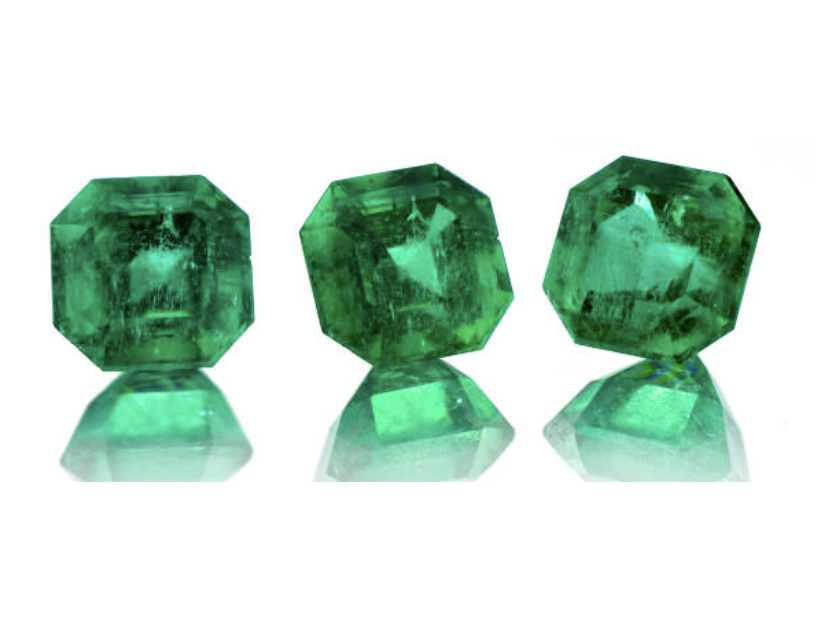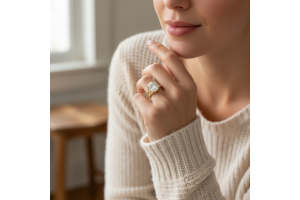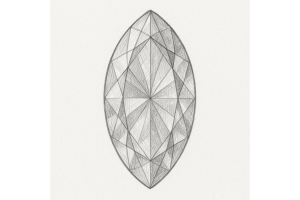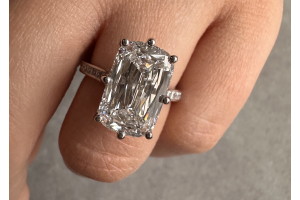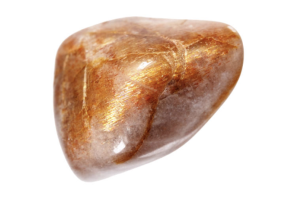USD
/
USD
/
Shipping to:
Currency:
Emerald: Explore the Lush Beauty of May’s Birthstone
May, a month of blooming life and vibrant renewal, is graced with a birthstone that captures the essence of spring’s lush beauty—emerald. Admired for its rich green tones and timeless elegance, the emerald has been treasured for millennia, symbolizing rebirth, love, and wisdom. In this blog, we explore the fascinating world of emeralds, from their ancient origins to their modern-day allure, making them the perfect gem for anyone born in May.
Unveiling the Origins
The word emerald comes from the Greek smaragdos, meaning “green stone,” a tribute to its most defining feature. These stunning gems are a variety of the mineral beryl, colored by trace amounts of chromium and vanadium.
Historically, the most famous emeralds were mined in Egypt’s Cleopatra Mines, where they were cherished by pharaohs. Today, Colombia produces some of the world’s most sought-after emeralds, prized for their deep, vivid green. Other major sources include Zambia, Brazil, and Afghanistan, each offering emeralds with their own unique characteristics.
Myths and Legends
Emeralds have long been wrapped in myth and mysticism. The Incas and Aztecs considered them sacred stones, while ancient Egyptians believed they represented eternal life and were buried with them to protect the soul in the afterlife.
In medieval Europe, emeralds were thought to protect against evil spirits and uncover hidden truths. They were also connected to fertility and loyalty, making them popular for engagement or betrothal gifts. Some legends even claim that the Holy Grail was carved from a single massive emerald.
The Spectrum of Green
Unlike diamonds, which are prized for clarity, emeralds are celebrated for their color. The most desirable shade is a rich, velvety green with a slight bluish undertone, often referred to as Colombian green. Other notable varieties include:
- Zambian emeralds: darker with a cooler, bluish tone
- Brazilian emeralds: lighter, with a more yellowish-green tint
- Trapiche emeralds: rare stones with a unique six-point radial pattern
Natural inclusions—known as jardin (French for “garden”)—are common in emeralds and are considered part of their charm. Perfectly clear emeralds are extremely rare.
Emerald Cuts and Styles
Because emeralds are more fragile than other gemstones, they’re usually cut into shapes that minimize pressure. The most iconic is the emerald cut—a rectangular step-cut designed to reduce breakage while showcasing the gem’s color. Other popular styles include:
- Oval: maximizes the stone’s visual size and weight
- Cushion: soft, rounded corners for a vintage look
- Cabochon: a smooth, domed cut typically used for opaque or heavily included stones
Emeralds look especially striking in vintage or art deco-inspired settings, and they pair beautifully with yellow gold or accent diamonds that highlight their vibrant color.
Healing Properties and Symbolism
Beyond their beauty, emeralds are thought to have a variety of metaphysical properties, such as:
- Encouraging emotional balance and reducing stress
- Improving intuition and mental clarity
- Representing hope, renewal, and unconditional love
In Vedic astrology, emeralds are associated with the planet Mercury, believed to support communication, intelligence, and insight.
Emeralds in Jewelry
Whether featured in statement rings, elegant earrings, or dainty necklaces, emeralds bring a sense of sophistication to any jewelry piece. They’re a staple in royal collections too—just look at the famous Cambridge emeralds worn by the Princess of Wales.
As consumers become more conscious of sourcing, many jewelers now offer traceable emeralds from ethically responsible mines, ensuring beauty and integrity go hand in hand.
Caring for Emeralds
Emeralds are relatively delicate compared to diamonds and sapphires, so they require special care:
- Clean gently using lukewarm water, mild soap, and a soft brush
- Avoid ultrasonic and steam cleaners
- Store separately to avoid scratches from harder gems
- Have your emerald re-oiled if needed—many are treated with oil to enhance clarity
Conclusion
The emerald, May’s birthstone, is a gem of exceptional beauty, history, and meaning. Whether you're drawn to its vivid color, mystical background, or deep symbolism, this gemstone remains a lasting emblem of nature’s richness. As May unfolds in brilliant shades of green, let the emerald remind you of growth, harmony, and the timeless elegance of spring’s renewal.



